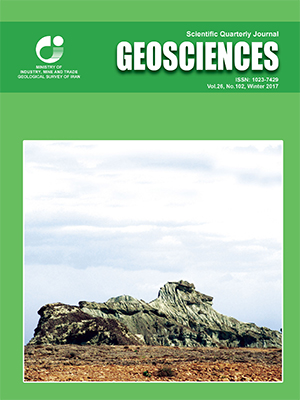Document Type : Original Research Paper
Authors
1 Aquifer geometry of Sahneh-Bisetun plain based onmorphotectonic and active faulting, Kermanshah province, Iran
2 M.Sc., Research Institute for Earth Science, Geological Survey of Iran, Tehran, Iran
3 Assistant Professor, Research Institute for Earth Science, Geological Survey of Iran, Tehran, Iran
4 Ph.D. Student, Department of Basic Studies of Water Resources, Kermanshah Regional Water Authority, Kermanshah, Iran
Abstract
The NW-SE trendingSahneh-Bisetun Plain is located in the northeast of the Kermanshah province, and is extendedmore or less sub-parallel with the Zagros structural zone. The proximity of this plain with the Main Recent Fault (MRF) makes its study more important. In this study, in addition to the identification of the faults affecting the Sahneh-Bisetun Plain, formation of the plain and how it evolved in association with the active surrounding faults have been investigated. The general results of this study show that the geometry and morphology of this plain is affected by the Badrban and Barnaj active and hidden faults. The Sahneh-Bistun basin has been formed as the result of normal movement of the Barnaj fault in east of the Bistun-Tagh Bostan Mountain and thrust mechanism of the Badrban fault. The structural pattern of the aquifer was determined by the study of the interaction of active surrounding faults controlling the Quaternary basin and by using geo-electric data and qualitative analysis. Thickness ofaquifer in different parts of the plain was also measured. It indicates that the thickest part of the alluvium is located at the center of the plain and thins towards the surrounding rock units in the northwest or southeast.
The NW-SE trendingSahneh-Bisetun Plain is located in the northeast of the Kermanshah province, and is extendedmore or less sub-parallel with the Zagros structural zone. The proximity of this plain with the Main Recent Fault (MRF) makes its study more important. In this study, in addition to the identification of the faults affecting the Sahneh-Bisetun Plain, formation of the plain and how it evolved in association with the active surrounding faults have been investigated. The general results of this study show that the geometry and morphology of this plain is affected by the Badrban and Barnaj active and hidden faults. The Sahneh-Bistun basin has been formed as the result of normal movement of the Barnaj fault in east of the Bistun-Tagh Bostan Mountain and thrust mechanism of the Badrban fault. The structural pattern of the aquifer was determined by the study of the interaction of active surrounding faults controlling the Quaternary basin and by using geo-electric data and qualitative analysis. Thickness ofaquifer in different parts of the plain was also measured. It indicates that the thickest part of the alluvium is located at the center of the plain and thins towards the surrounding rock units in the northwest or southeast.
Keywords

